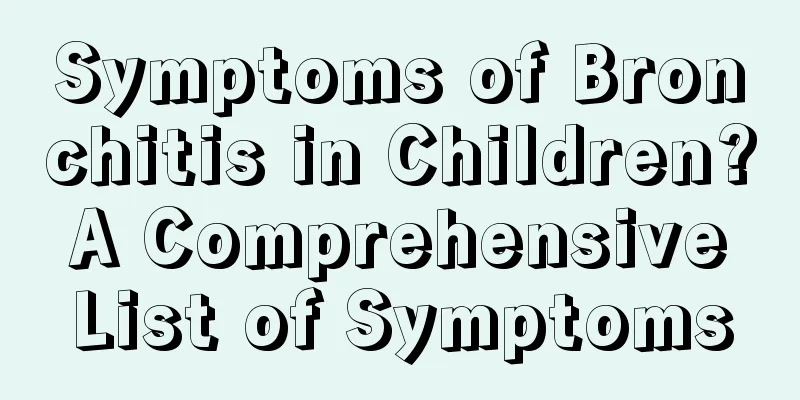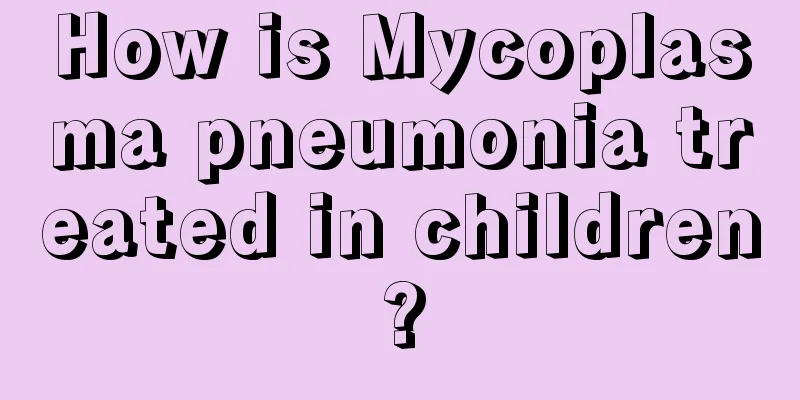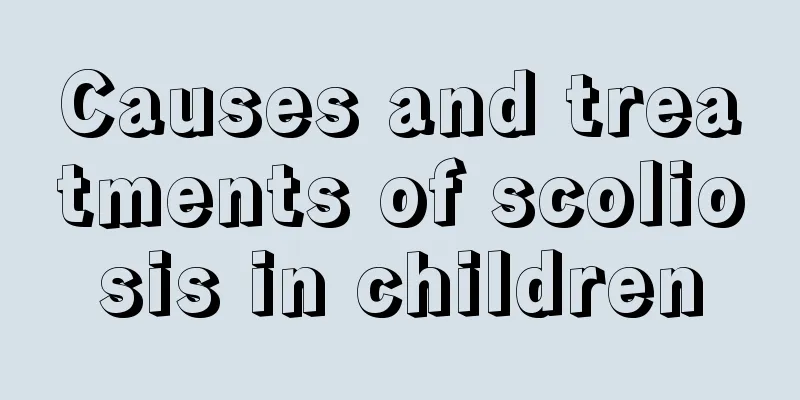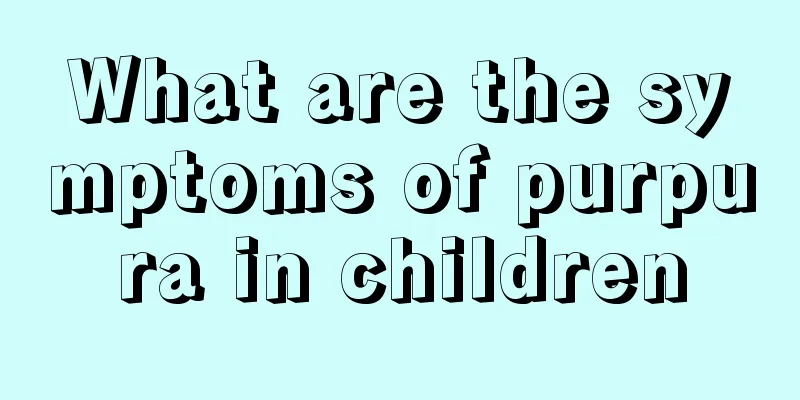Symptoms of Bronchitis in Children? A Comprehensive List of Symptoms

|
If your baby suffers from bronchitis, he may show cold symptoms at first, followed by coughing and sputum. If the condition is severe, he may even experience chest tightness and shortness of breath. At first, the baby may show symptoms of a cold, such as sore throat, fatigue, runny nose, chills, pain, low fever (37.8~38.3 degrees Celsius), etc. This is followed by a cough, which is dry and produces no sputum at first, but becomes more severe and produces green or yellow sputum. When your baby coughs, he or she may also gag or vomit. Your baby may also experience chest pain, shortness of breath, and wheezing. If the bronchitis is severe, he may have a fever for several days and may have to cough for several weeks before he fully recovers. In infancy, there is a special type of bronchitis called asthmatic bronchitis, which is more common in obese children under 2 years old, who often have a history of eczema and allergies. Asthma symptoms appear soon after onset and may recur. Generally, the symptoms disappear by the time the child reaches school age. Only a few develop bronchial asthma when they are older. The cause of the disease may be that the child is allergic to the infection, which manifests as bronchial spasm and causes wheezing. Children with bronchitis should pay attention to rest, keep the bedroom well ventilated, and maintain appropriate temperature and humidity. Give easily digestible food and drink plenty of boiled water. Provide vitamin B complex and vitamin C, 1 tablet each time, 3 times a day Second-rate. Children with chronic and recurrent illnesses should be given vitamin AD, 1 tablet each time, 2-3 times a day. For young and weak children with mild symptoms, they can take sulfonamides or penicillins orally, and use certain expectorants and cough suppressants to achieve a synergistic therapeutic effect. Sulfonamides can be used in combination with trimethoprim-sulfamethoxazole, 20 mg per kilogram of body weight per day, orally in two divided doses. Since sulfonamides are excreted slowly and can easily cause crystal precipitation in the kidneys, sufficient water should be supplied during medication to facilitate excretion. |
<<: What is jaundice? Different types have different causes.
>>: The child has a blue birthmark, which can be treated with laser
Recommend
What are the benefits of children learning Taekwondo?
Nowadays, you can always see some children wearin...
How to train a 3-year-old with poor chewing ability
A child’s physical health is inseparable from his...
7 safety tips you must tell your children
1. Be wary of cars Cars have become the number on...
Can I breastfeed while sleeping?
Mothers who have just given birth are weak and sl...
What should I do if my baby has a fever and vomits?
During the feeding process, babies will more or l...
How to prevent baby's red bottom, mothers can do this
It is very easy to prevent a baby's diaper ra...
What are the symptoms of excessive lead in babies? Pediatric experts answer
Many people may have heard of lead poisoning. If ...
What to do if your child has a runny nose due to a cold
We all know that children grow and develop very f...
How can children grow taller?
Children's growth and development has always ...
What causes white spots on baby's tongue?
Many parents have found white spots on their baby...
Symptoms of foreign body in baby's throat
Many children tend to be careless when they are y...
It turns out that there are these disadvantages of enema for children
Enema is a very common treatment technique that c...
How to treat mumps in children effectively
Children are more likely to get mumps because the...
White peak on the child's face
Vitiligo is a common skin disease among modern pe...
Will children have dark blue stools after taking anti-inflammatory drugs?
After a baby is born, it is common for him to get...









